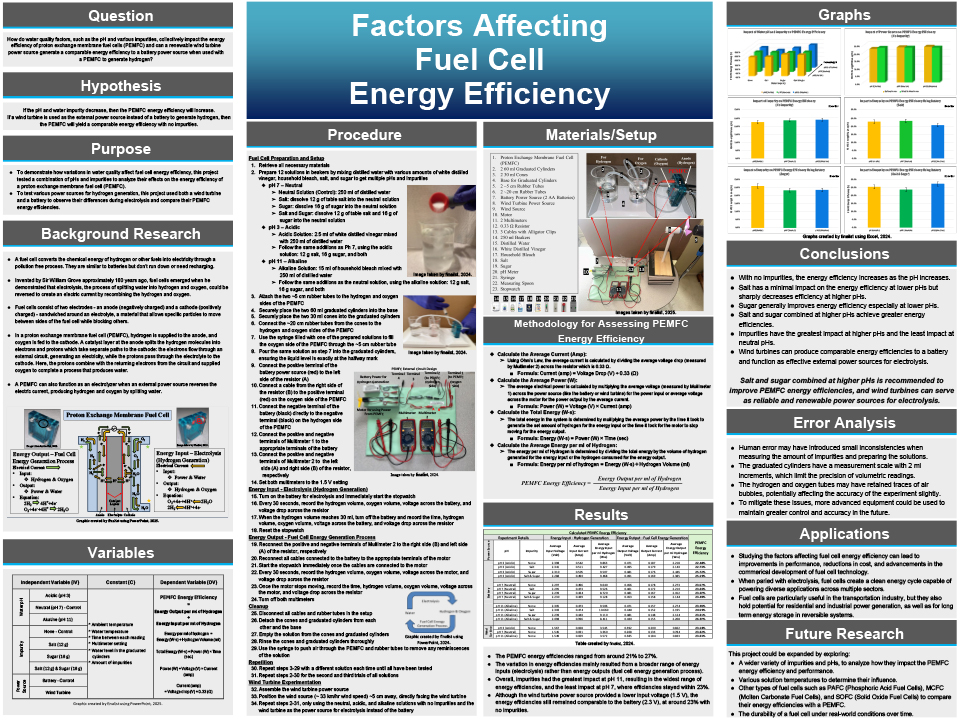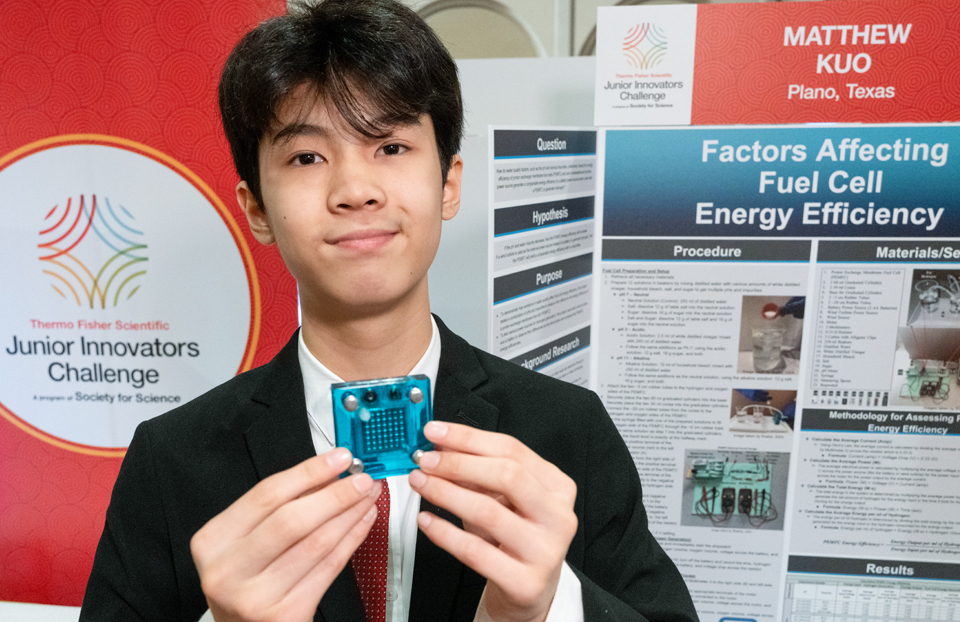Matthew Kuo
8th Grade, Renner Middle School
Plano, TX
Factors Affecting Fuel Cell Energy Efficiency
View Poster
Project Background
Matthew has always been interested in renewable energy. “In the past, I have explored solar panels and wind turbines, but this year I wanted to explore something unfamiliar,” he says. He became fascinated by fuel cells, energy sources that use chemical reactions to produce electricity. Matthew decided to study a proton exchange membrane fuel cell. These fuel cells use hydrogen ions to generate electricity. They can also perform electrolysis — splitting water molecules to produce the hydrogen they need. Matthew was curious to see how water quality might affect how his fuel cell performed.
Tactics and Results
Matthew compared two sources of energy, a wind turbine and a battery, to power his fuel cell. He showed the two methods have similar energy efficiency, at about 23 percent. Then, over 50 experiments, he compared water at different pHs, as well as adding salt, sugar and impurities to the water for the fuel cell. Matthew predicted that lower pH and fewer impurities would make his fuel cell more efficient. But he found that higher pH made his fuel cell more efficient. Impurities reduced efficiency, especially at higher pH. Adding salt significantly reduced efficiency at higher pHs, while sugar increased energy efficiency. Sugar and salt together at a high pH increased efficiency well, and Matthew hopes that perhaps certain levels of impurities like sugar and salt could help fuel cells perform better in the future.

Beyond the Project
Matthew likes “speed cubing”—racing to solve puzzles like a Rubix cube. He also likes sketching, creating and editing videos, and playing video games with his friends. He’s like to be a doctor, like his father. “I’ve developed a deep passion for medicine due to a strong scientific background in my family and my dad who works hard every day as a doctor,” he says. “I want my life to involve science, staying at the head of medical advancements.”

